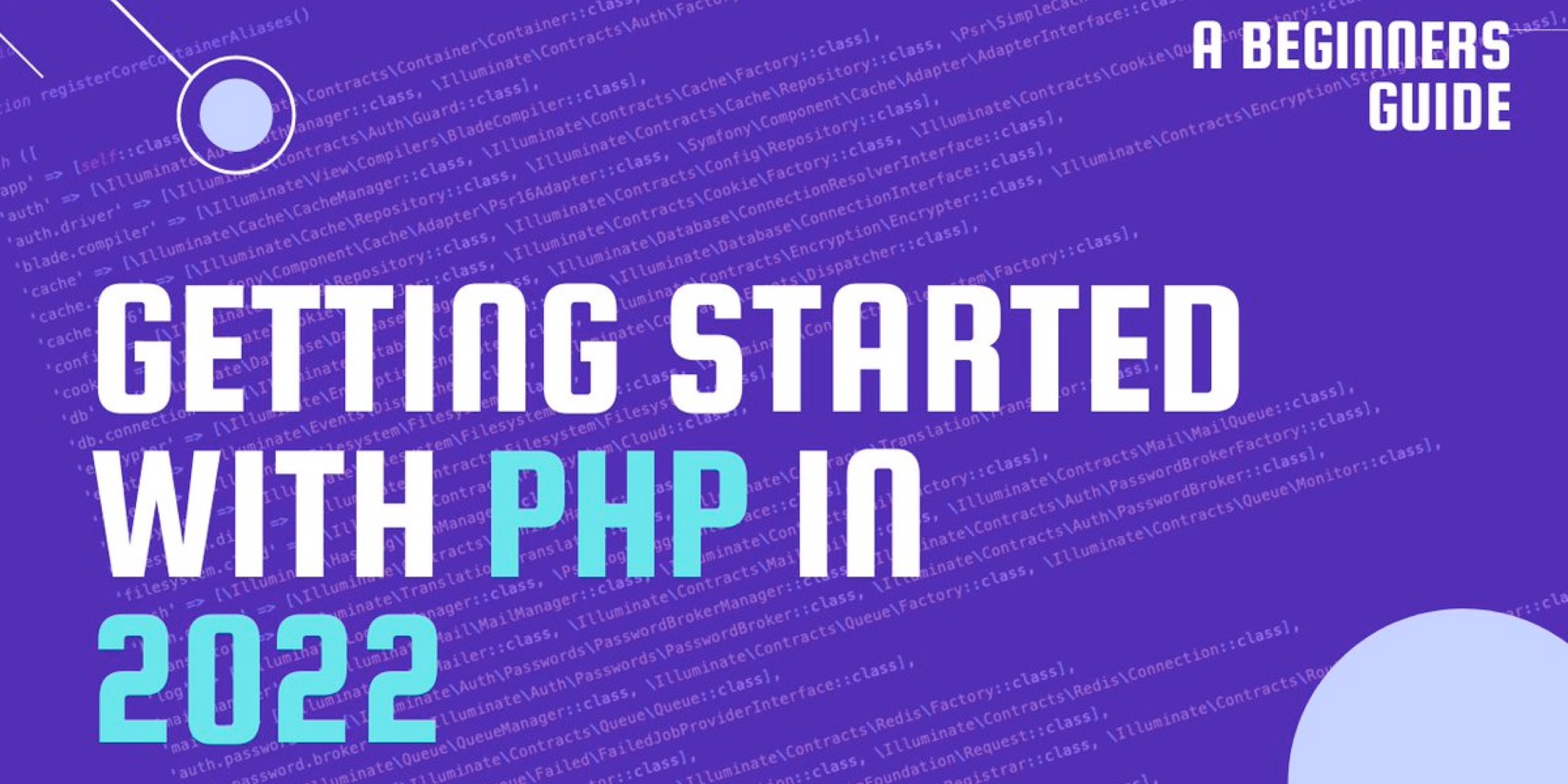https://i.ytimg.com/vi/hrdsRtrxl2s/maxresdefault.jpgIn this video, we discuss our favorite new features in PHP 8.1. Including enums, being able to initialize properties in the initializers of a class, read-only properties, fsync(), final class constants, and array_is_list().Laravel News Links
Essential Gunsmithing Tools: Bare Minimum to Gun Specific
https://www.pewpewtactical.com/wp-content/uploads/2016/07/12.-Start-Roll-Pin-with-Hammer-1024×769.jpg
New to the world of guns?
Find out the most essential gunsmithing tools you’ll need to keep your firearms running in great shape or to make easy modifications.

We’ll go in order from the most basic kit (some of which you’ll probably already have) to some more specialized tools as you progress in your gunsmithing journey.
Table of Contents
Loading…
Bare Essential Gunsmithing Tools
The great thing is that modern firearms are designed to be stripped/cleaned with minimal tools. Some don’t even require anything but your hands and the gun itself.
Brass Hammer & Plastic Mallet
Sometimes you want a little more force but not with something that could mar any of your finishes…
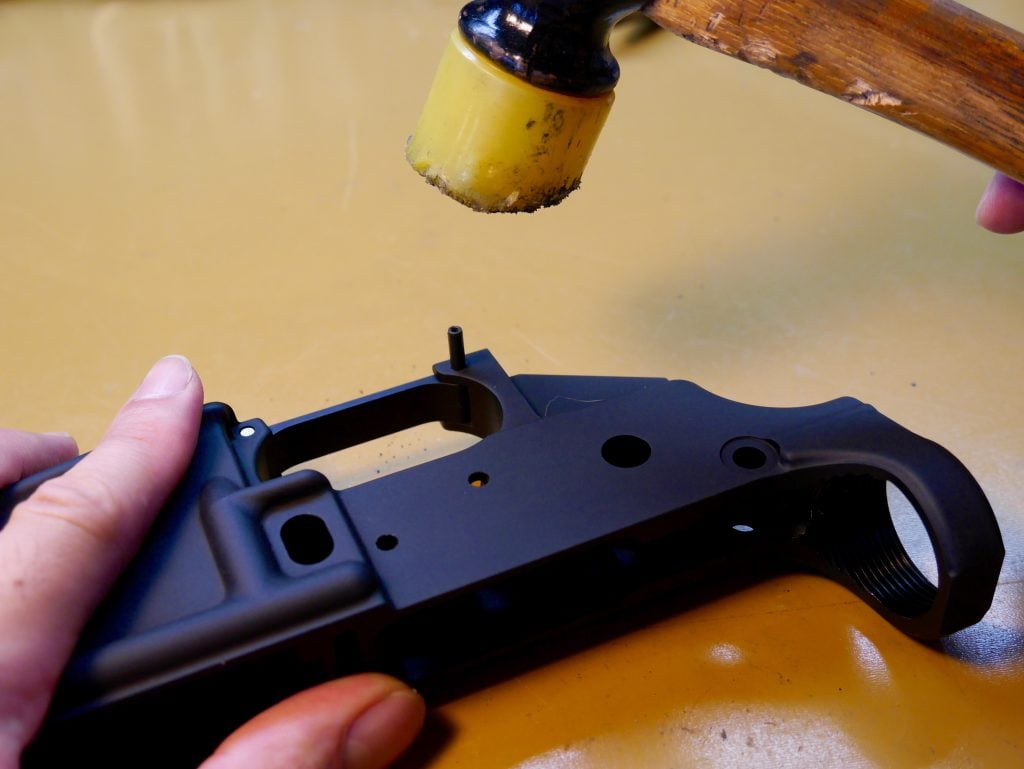
A brass hammer gives you the heft needed but doesn’t mar the normally much harder steel of a firearm. This hammer has interchangeable heads of brass, plastic, rubber, and even copper.
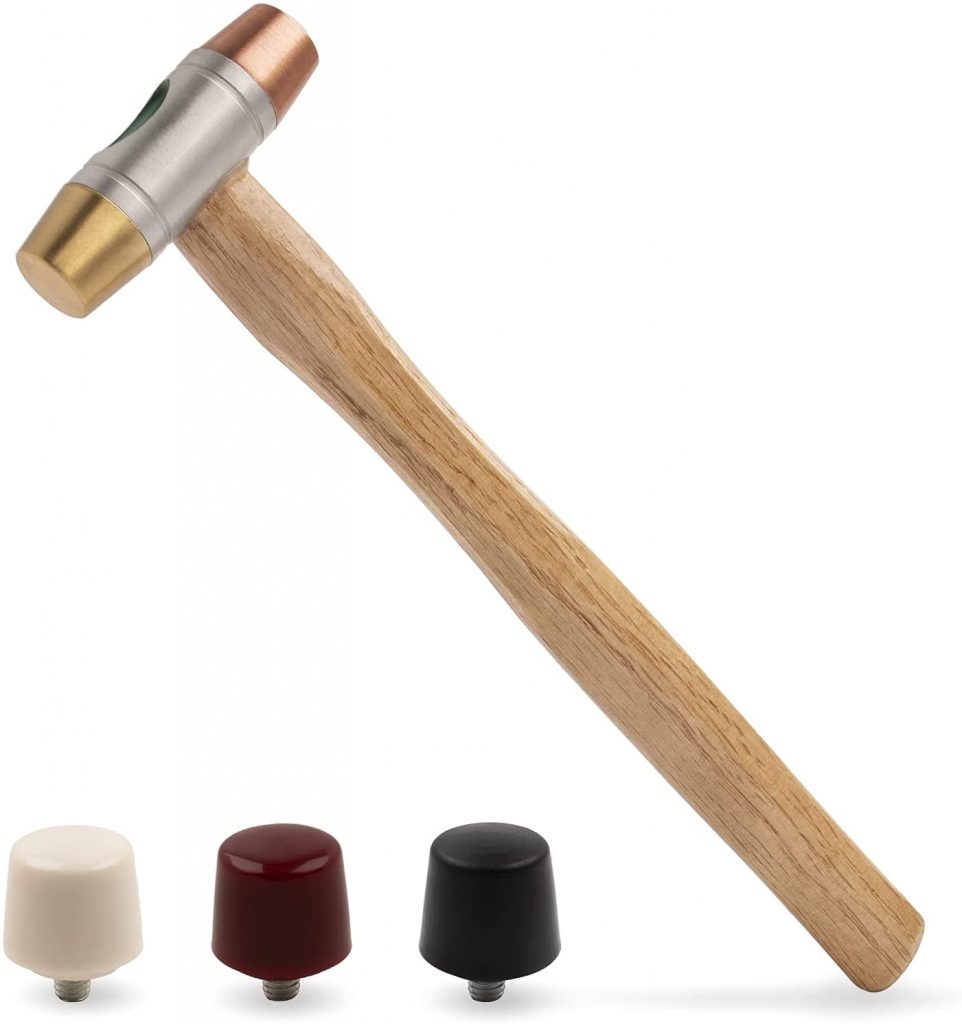
And I also keep a standard Rubber Mallet for some more forceful jobs.
Punches
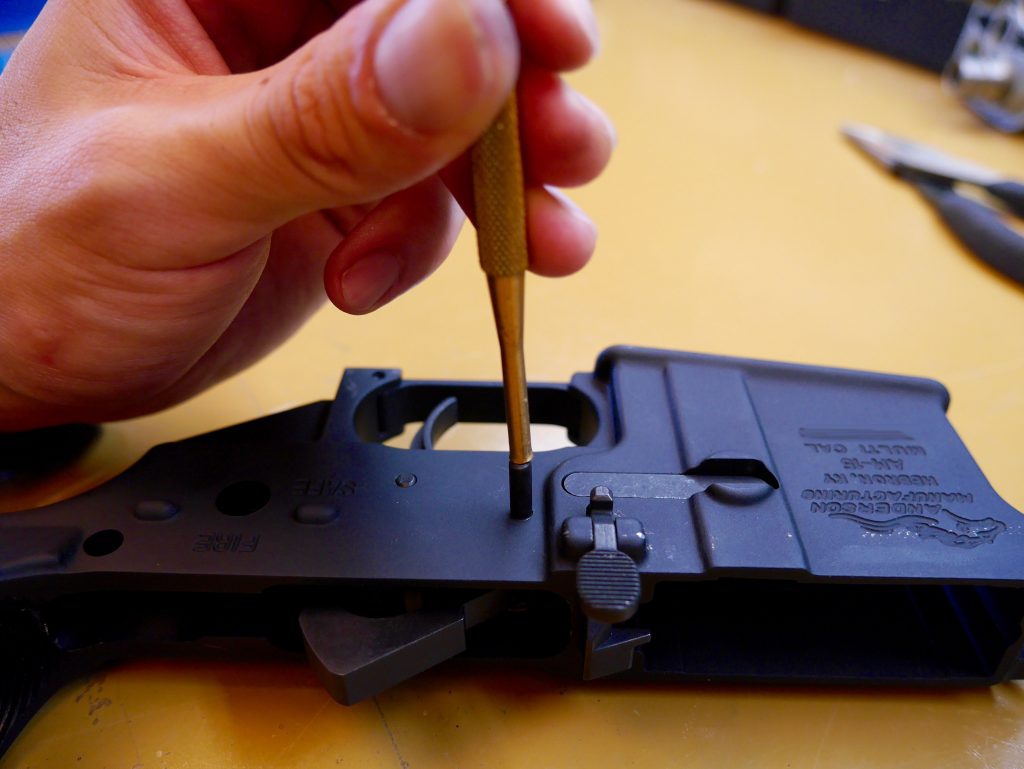
Punches let you drive pins that hold together many types of guns. Again, we go with brass punches so they do not mar up the gun. We use and love the Starrett Brass Punch Set since they have longer punches than normal gunsmithing sets.
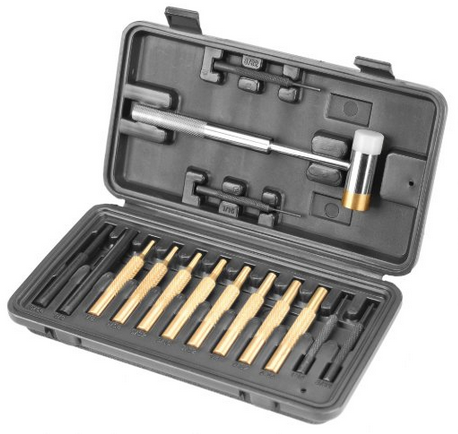
Or you can go with the combination hammer and punch sets from Wheeler which should be more than enough for introductory gunsmithing.
Hex / Allen Key Wrench Set
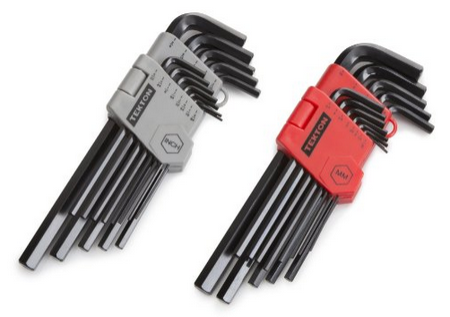
A lot of firearm screws utilize hex or Allen key patterns. To make it harder, there are metric and U.S. standards that roughly correlate to the origin of your gun. This long arm wrench set makes it easy for both standards.
I’ve probably bought half a dozen sets to place everywhere since they are never around when I need them!
Screwdrivers
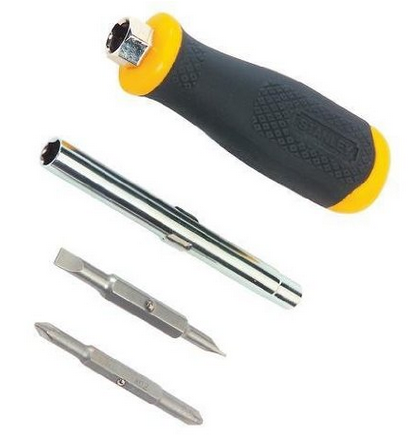
And of course screwdrivers, you’ll need a sturdy multi-purpose one as well as a precision kit.
Threadlocker

Screws in a gun go through an immense amount of stress due to recoil and some will actually start backing out. That’s where threadlocker or Loctite (brand) comes in.
There are a couple of varieties but the two most used are blue (medium) which is great for vibration issues (such as handguard screws) and can be easily removed.
And red (high strength) ($6) which is when you want to lock something for almost forever (such as scope rings) since it requires heat to remove.
More Specialized Gunsmithing Tools
Torque Wrench
If you’re doing anything with precision involved like putting on optics…you’ll want a torque wrench combined with threadlocker.

Torque wrenches make sure you’re in spec with the in-lb force and that all the screws have equal tension.
And the industry standard (and our go-to for years) is the Wheeler FAT Wrench.
Prices accurate at time of writing
Prices accurate at time of writing
It comes with useful bits that will do for most jobs…and it’s super easy to dial in the appropriate force.
Fix It Sticks
Looking for the top-of-the-line gunsmithing kit? Check out Fix It Sticks.

The Works is truly the works and even has its own super nice torque wrench. Pricey but the best shooters out there (and most of the Pew Pew Tactical team) has one in their range bag.
Prices accurate at time of writing
Prices accurate at time of writing
Want to learn more about the kit? Check out our complete Fix It Sticks Review and also our coupon PEWPEW10 that will save you 10%.
Also…don’t have a range bag yet…check out our Best Range Bags article.
Trigger Pull Gauge
Doing some trigger mods?
You’ll want to make sure you’re actually doing something instead of going by pure feel.
We have an in-depth guide to the Best Trigger Pull Gauges.
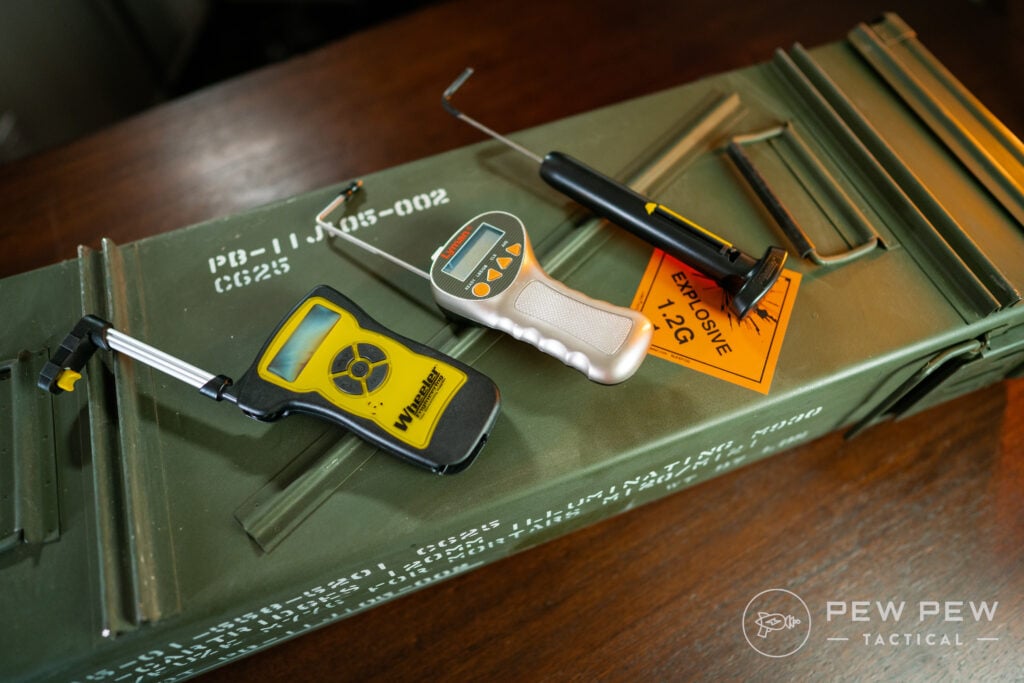
But the simplest one that will work for all but the most OCD is the Wheeler Trigger Pull Scale.
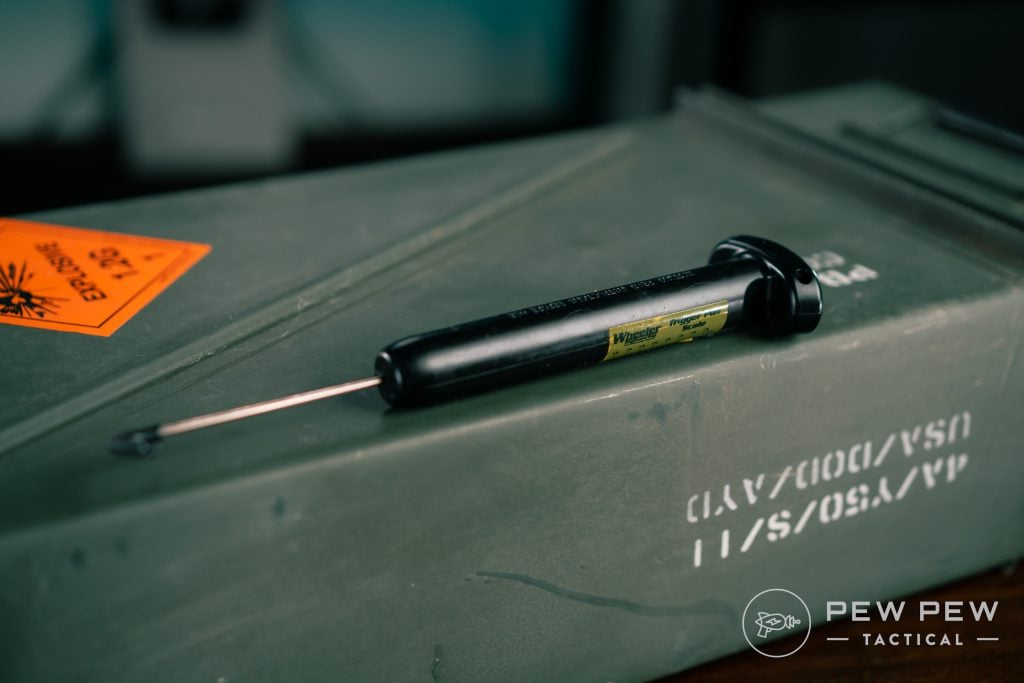
Prices accurate at time of writing
Prices accurate at time of writing
Gun Specific Gunsmithing Tools
There are tons of gun-specific tools, but here are the main ones that you’ll likely use for your Glock and AR-15.
Glock Tool

This tool is actually really useful to get the pins in and out without marring the polymer frame, and also to disassemble magazines.
AR-15 Armorer’s Wrench
There’s a lot of versions of the AR-15 Armorer’s Wrench…so much so that we have our own dedicated article.
However our go-to is the Magpul Version.
Prices accurate at time of writing
Prices accurate at time of writing
There are versions on Amazon but we haven’t had the greatest of luck with them breaking little bits when torquing important AR-15 parts.
AR-15 Upper Receiver Vise
If you’re adding a barrel (or taking one off)…you’ll need a special vise to make sure you don’t warp the upper receiver.

The current one we use is the Obsidian Arms.
Prices accurate at time of writing
Prices accurate at time of writing
Real Avid AR-15 Armorer’s Kit
If you want a one-and-done situation for your AR-15…check out the Real Avid Armorer’s Master Kit.
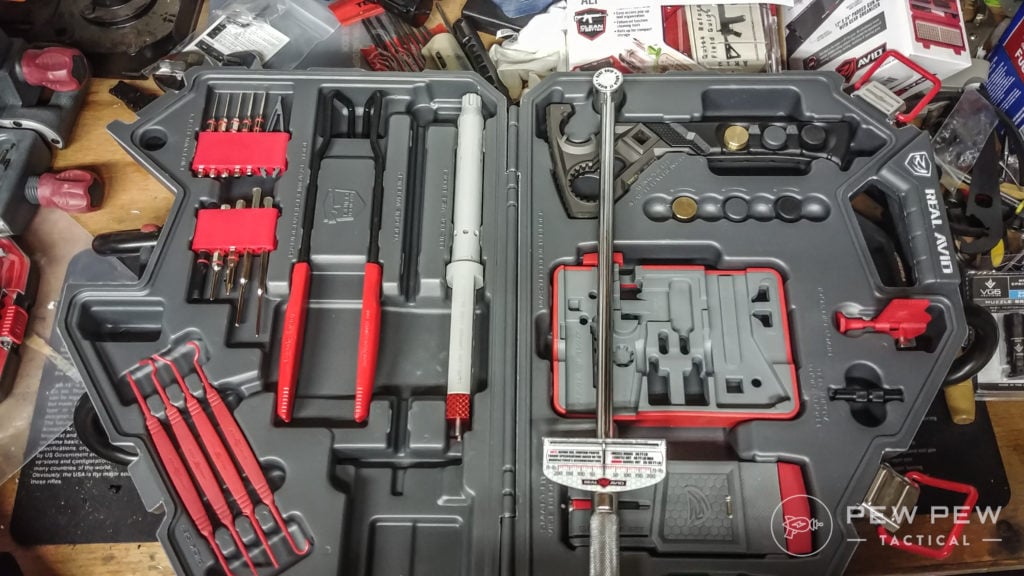
It’s ginormous and has everything you need. And we have a full review.
Prices accurate at time of writing
Prices accurate at time of writing
Application Specific Gunsmithing Tools
There are too many to list here but they all depend on your specific application. If you want to fit 1911 parts, you’ll need some files and a polishing compound. But if you’re just looking to drift your AK sight, you’ll need a special tool.
Check out our DIY Gunsmithing Tutorials where we cover all the steps and necessary tools.
Looking for more gear we’ve tested to get you started? Start with these:

Conclusion
There you have! The tools we recommend when starting your firearm journey.
All of these should get you where you’re going, but know that certain tasks might require more specific tools. So, it’s always recommended to do a little research before you jump into a project.
(Lest you be like us and make 25 trips to Home Depot or Lowes…)
What tools do you use the most? Let us know in the comments below. Are you building an AR-15? Make sure to read up on the parts and tools you need to do the job at our AR-15 Parts & Tools List.
The post Essential Gunsmithing Tools: Bare Minimum to Gun Specific appeared first on Pew Pew Tactical.
Pew Pew Tactical
Livewire PowerGrid: Quick Datatable Package [REVIEW]
http://img.youtube.com/vi/Qj0GLZJzDLY/0.jpgThis package allows you to build a Livewire-powered data table with search, sort, filtering, and even inline editing. Let’s see how it works.Laravel News Links
What about my mental health?
Columbia University put out this video on why pronouns are important pic.twitter.com/UK48Qxeisc
— Libs of Tik Tok (@libsoftiktok) November 5, 2021
It’s a threat to my mental health to make me do this.
I believe that 2 + 2 = 4.
Two plus two always equals four.
I will not deny reality.
I will not be forced to subjugate myself to someone else’s fantastical whims.
To violate that, to force me to acquiesce to someone else’s delusion is a threat to my mental health and I will not do it.
There are four lights.
How to Set Up Your Own Secure Email Server
https://static1.makeuseofimages.com/wordpress/wp-content/uploads/2021/10/set-up-secure-email-server-featured.jpg
Major email service providers such as Google and Microsoft occasionally scan your emails to provide targeted ads and other services. You may be concerned by this as it does violate your privacy. One of the easiest ways to prevent this breach of your privacy is to set up your own secure email server.
Setting up your private email server is fairly easy and once the initial set up is complete, you can further customize it according to your preferences.
What Is a Private Email Secure Server?
Whenever you receive an email, it is first stored on an email server before being downloaded to your email client or browser. These email servers are usually managed by the same companies that provide you with email addresses, such as Google, Yahoo, and Microsoft.
While these services do provide you with a lot of convenience, they can easily scan confidential and regular emails to provide targeted ads and improve services such as Google Assistant. Additionally, government entities and law enforcement agencies can ask your email provider to reveal your inbox.
On the other hand, you have complete control over your emails when you use a private email server. This is because the server is located at your own house, on a computer you own.
The glaring advantage of having your own secure email server is privacy. Your emails are completely your own. You can also use one to send completely anonymous emails.
Your ISP and your employers are completely devoid of any access to your emails. This provides a peace of mind that no third-party email providers can match. A private email server allows you to set up filters that are simply not possible when using a regular email service.
However, all this does come at a cost. You are completely responsible for the security of your email server. While your emails can no longer be snooped upon by companies, the server can still be compromised by a determined hacker.
Email providers have dedicated teams that look for security flaws in their servers. However, in the case of a private email server, you are completely responsible for making sure that the server is secure.
How to Set Up Your Own Secure Email Server
Setting up your private email server shouldn’t be a problem at all, provided you follow the steps listed below accurately.
However, before getting started, ensure that you have all the things needed to set up the server. These include:
- A separate computer with decent hard drive capacity. This will act as the email server and store all your emails.
- A domain name for your private email server.
- A good and stable internet connection.
- An email server service to route your emails. Ideally, it should also have features such as a spam filter, and antivirus protection.
Download and Install an Email Server
The first thing you need to get started is an email server software. There are plenty of programs available. However, most of them are paid.
For this tutorial, let’s make use of an open-source and free email server called hMailServer. To download the application, simply go to hMailServer’s download page and click on the file under “Latest Release”.
Related: IMAP vs. POP3: What’s the Difference? Which One Should You Use?
After downloading the app, simply follow these steps to install it:
- Run the downloaded file.
- On the Setup welcome screen, click Next.
- On the next screen, click on the “I accept the agreement” radio button. Be sure to read through the license agreement first.
- On the next screen, choose where you want to install the hMailServer application. It’s better to install it in the C: drive itself.
- On the components selection screen, choose Full Installation from the drop-down menu and click Next.
- In the next window, choose the database you would like to use. Ideally, choose the first option, i.e. Use built-in database engine. Click on Next.
- Choose whether you want to create a start menu shortcut or not, then click Next.
- The following screen will prompt you to create a password for your email server. Type in a strong password and click on Next.
- Now, click on Install. Wait for the installation to complete.
- After the installation finishes, ensure the Run hMailServer Administrator checkbox is checked and click on Finish.
How to Set Up hMailServer
The actual set up process for your private email server is also fairly easy. The following steps should give you a clear idea on how to set up your email server, and some good practices while doing the same:
- Run hMailServer Administrator. The app should already be running if you followed step 10 in the section above.
- In the window that opens, click on Connect and when prompted, enter the password you entered during installation in step 8 above.
- On the welcome screen, under Getting started, click on Add domain.
- Under the General tab, type in a domain name under “Domain”. Ensure that the Enabled checkbox is ticked, and then click on Save.
- Now, using the navigation bar on the left, go to Domains and then click on the domain name you’ve just entered. Click on the Accounts directory.
- In the Accounts window, click on Add.
- In the next window, type a name under the Address text box. This will function as your email address.
- Enter a suitable password in the Password section. Click on Save.
- Now, using the navigation bar, go to Settings > Protocols.
- Check SMTP, then uncheck the POP3, and IMAP checkboxes. Remember to click on Save.
- Following this, click on Advanced, under the “Settings” heading itself. Under “Default domain”, type localhost, and then click on Save.
- Click on the + button to expand the Advanced settings tree.
- Navigate to TCP/IP ports and ensure that ports 25, 110, and 143 are enabled for SMTP, POP3, and IMAP respectively.
- Now, test your email server by navigating to Utilities > Diagnostics. Select the domain that you created earlier, and click on Start to begin the test.
- This will check whether you can successfully connect to the mail server you just created.
After following the aforementioned steps, your private email server is ready to run.
All you need to receive and send emails is a client such as Thunderbird or Outlook. Use the domain credentials you created earlier to log in.
Related: The 5 Best Free Email Clients for Your Desktop PC
Additionally, you can also enable and customize features such as antivirus and spam protection by running the hMailServer Administrator utility. Look for these features on the navigation bar.
Your Private Email Server Is Ready
As is evident, setting up your own email server is not that difficult. In fact, it should take you less than an hour to get it up and running, if you don’t run into any unexpected issues. However, in case you’re looking for more advanced features, it is advisable to hire an IT professional to set it up for you.
And if it isn’t possible for you to set up your own email server, using alternative, secure email services is the next best option.
Fed up with government and third-party surveillance of your emails? Protect your messages with a secure encrypted email service.
Read Next
About The Author
Manuviraj Godara
(136 Articles Published)
Manuviraj is a Features Writer at MakeUseOf and has been writing about video games and technology for over two years. He is an avid gamer who also spends his free time burning through his favourite music albums and reading.
MUO – Feed
Getting Started With PHP in 2022
https://laravelnews.imgix.net/images/getting-started-php-2022.jpg?ixlib=php-3.3.1
Mohamed Said has a new video on the the Laravel YouTube channel for those getting started with PHP or wanting a refresher.
The post Getting Started With PHP in 2022 appeared first on Laravel News.
Join the Laravel Newsletter to get Laravel articles like this directly in your inbox.
Laravel News
This video is a litmus test
https://gunfreezone.net/wp-content/uploads/2016/01/cropped-gfz-ico.png
Watch this:
get a coffee maker you psychotic freak…
how do these people walk upright?!?#braindamaged—
🅴🅻🅻
🅻
🆄
(@Lenabellalou) November 4, 2021
There are two kinds of people in this country:
Those who think this guy is fucking nuts.
Those who think this guy is taking perfectly reasonable actions against a deadly virus.
The problem is that the pop culture and current political majority seems to be squarely in the latter camp.
The crazy hypochondriac are running society.
It’s nice to be right about Ivermectin
Earlier in the week, I posted an article in which I postulated that the widespread use of Hydroxychloroquine and Ivermectin in Africa to treat other diseases was inhibiting the spread of COVID-19 in that continent.
Thanks to a comment by reader Nahanni on another post yesterday, I was led to an article at NOQReport titled "Shocking Conclusions from Africa Study Expose Why Big Pharma’s Puppets are Suppressing Ivermectin Data". It predates my article, but I hadn’t been aware of the study until Nahanni drew it to my attention. In so many words, the long article confirms my hypothesis. Here are a few excerpts. Bold, underlined text is my emphasis.
A graph made its rounds on social media yesterday that raised some eyebrows. It showed the clear difference between countries in Africa that use Ivermectin regularly versus those that do not. The differences were startling as the Ivermectin-nations showed unambiguous advantages against Covid-19. The mortality rates were very low compared to countries that do not use Ivermectin on a wide scale … Universal Ivermectin use seems to be the only factor preventing these nations from a full-blown Covid-19 catastrophe.
. . .
The final and arguably most important “hidden” takeaway from the study is that recovery and fatality rates for Covid-19 cases were not statistically significantly different between Ivermectin countries and non-Ivermectin countries. That means that once a person was tested and officially declared a Covid-19 case, they recovered or died at essentially the same rates across the board.
This tells us that other factors such as medical proficiency, environmental differences, or access to vaccines do not contribute to whether someone lives or dies once they have become sick with the disease. Since overall mortality rates per capita are significantly lower in Ivermectin nations but case fatality rates are the same, Ivermectin is clearly effective as an early treatment and perhaps even as a preventative measure.
Remember, the people in the Ivermectin nations are already taking the drug. They aren’t waiting for a positive Covid test and likely aren’t even very concerned about the disease at all. Many if not most who do end up becoming Covid-19 cases in Ivermectin nations were likely among those who were not taking Ivermectin as an antiparasitic.
There’s more at the link, including statistics, charts, etc.
I’m very glad to have independent confirmation of what was basically just a theory of mine, based on experience in Africa, but not supported by medical evidence. The latter is now available, and seems to support my theory. It’s a warm fuzzy feeling to find that I was pretty much on the money.
I’d like to find out whether anyone’s done a similar study on Hydroxychloroquine as a COVID-19 suppressant in Africa. So many millions of people take it there as an anti-malarial prophylactic medication that I’m certain it must be having that effect; but as yet I haven’t found any investigations looking into whether that’s affecting COVID-19 infection rates. I’m willing to bet that it is, as discussed in my earlier article.
Peter
Bayou Renaissance Man
Comic for November 05, 2021
https://assets.amuniversal.com/8e93dad01343013a7fd8005056a9545d
Aliens Power Loader IRL
https://theawesomer.com/photos/2021/11/alien_power_loader_complete_t.jpg
It’s taken three years, but the guys at Hacksmith Industries have finally completed their working replica of the Power Loader from Aliens. In this final build video, they tidy up the cabling and put on finishing touches before taking it for an all-too-brief spin. We can’t wait to see them take down a xenomorph with this thing.
The Awesomer
